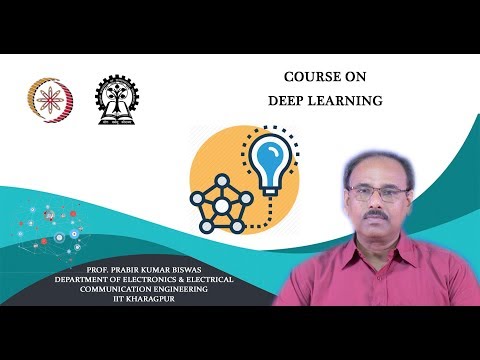Description:
COURSE OUTLINE : The availability of a huge volume of Image and Video data over the internet has made the problem of data analysis and interpretation a really challenging task. Deep Learning has proved itself to be a possible solution to such Computer Vision tasks. Not only in Computer Vision, but Deep Learning techniques are also widely applied in Natural Language Processing tasks. In this course, we will start with traditional Machine Learning approaches, e.g. Bayesian Classification, Multilayer Perceptron etc. and then move to modern Deep Learning architectures like Convolutional Neural Networks, Autoencoders etc. On completion of the course, students will acquire the knowledge of applying Deep Learning techniques to solve various real-life problems.

Deep Learning
Add to list